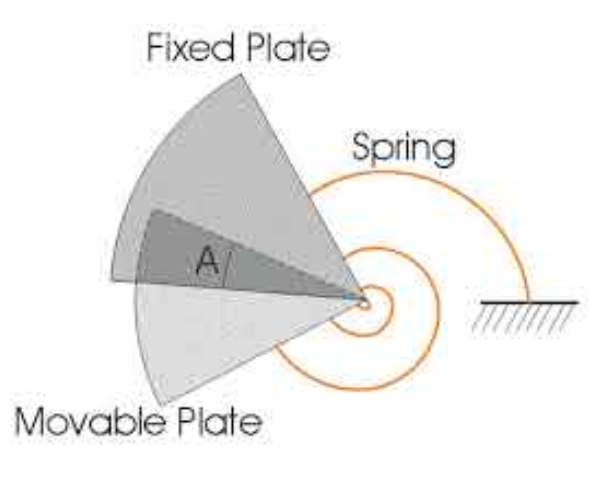Hello friends, in this article we will study about the Deflecting Force in Indicating Electrical Instruments.
We have already studied about the "Indicating Instruments and various other Electrical Instruments". You can read that article as link is provided below.
Introduction to Electrical Instruments and its types.
VARIOUS FORCES/TORQUE IN INDICATING INSTRUMENTS.
Essential forces or torque provided in the moving system of Electrical Instruments are:
1. Deflecting Force.
2. Controlling Force.
3. Damping Force.
We will deal with each forces one by one.
# DEFLECTING FORCE
The deflecting force is the force required for moving the pointer from rest on the calibrated scale.
The current ( or voltage ) under measurement is utilised to produce the deflecting force. There are various effects of current which are utilised for producing deflecting force in the instrument.
Some important & popular effects of current are:
1. Magnetic Effect : When a current flows through the conductor, a magnetic field is produced in the wire.
This is called magnetic effect of current.
This is called magnetic effect of current.
a) Now if that current carrying conductor is kept in between the poles of permanent magnet, then there will be the force of attraction or repulsion between wire and magnet. If we made the wire in form of coil and placing it on the spindle as well as attaching a pointer to it, then it will give deflection on the scale on passage of current through the coil.
This principle is used in Permanent Magnet Moving Coil (PMMC) Instruments.
b) But if a piece of soft iron is brought near the current carrying coil, then soft iron piece will be attracted by the coil. Attaching a pointer to the soft iron piece will give reading on the scale.
This principle is used in Attraction type Moving Iron Instruments.
c) If two soft iron pieces is placed near the coil, then there will be the force of repulsion between them. One iron piece is stationary while other is movable. Pointer is attached to the moving piece.
This arrangement gives the Repulsion type Moving Iron Instrument.
2. Electrodynamic Effect- If two current carrying coil are taken, they will produce unlike pole near each other and thus there will be a force of attraction between them. One coil is fixed and other is free to move. Pointer is attached to the moving coil.
Such instruments are called Electrodynamic Instruments.
Such instruments are called Electrodynamic Instruments.
Generally wattmeters are constructed using this effect.
3. Thermal Effect- If the current to be measured is passed through the coil, then heat is produced in the wire. With the help of thermocouple (a transducer) heat produced in the wire is converted into emf. The current produced by the emf is measured by an Ammeter. Hot wire instruments also uses the thermal effect for production of deflecting torque.
READ MORE ABOUT HOT WIRE INSTRUMENTS
READ MORE ABOUT HOT WIRE INSTRUMENTS
4.Electrostatic Effect- We know that force exists between two charged plates. One plate is fixed ,while other is movable and pointer is attached with the moving one.
Note that only Voltmeters can be made by using this effect. Such voltmeter are called Electrostatic Voltmeter.
Note that only Voltmeters can be made by using this effect. Such voltmeter are called Electrostatic Voltmeter.
An Electrostatic Instrument
5. Induction Effect- If a disc is placed in between the poles of an electromagnet , an emf is induced and hence an Eddy current is produced in the disc.
As per Fleming's left hand rule, force will be exerted on the disc due to the interaction of eddy current and magnetic field of electromagnet. It makes the disc to rotate. A pointer is attached to the disc . This effect is utilised in ac energymeters.
Instruments using this effect cannot be used to measure dc quantities.
6. Chemical Effect- This effect is utilised in ampere hour meters, which measures the capacity of batteries.
We will understand about controlling torque and damping torque in next article.
Link is provided below.
Control torque in Electrical instruments
Link is provided below.
Control torque in Electrical instruments
Thanks for reading.
Keep sharing and loving.
Keep sharing and loving.




No comments:
Post a Comment